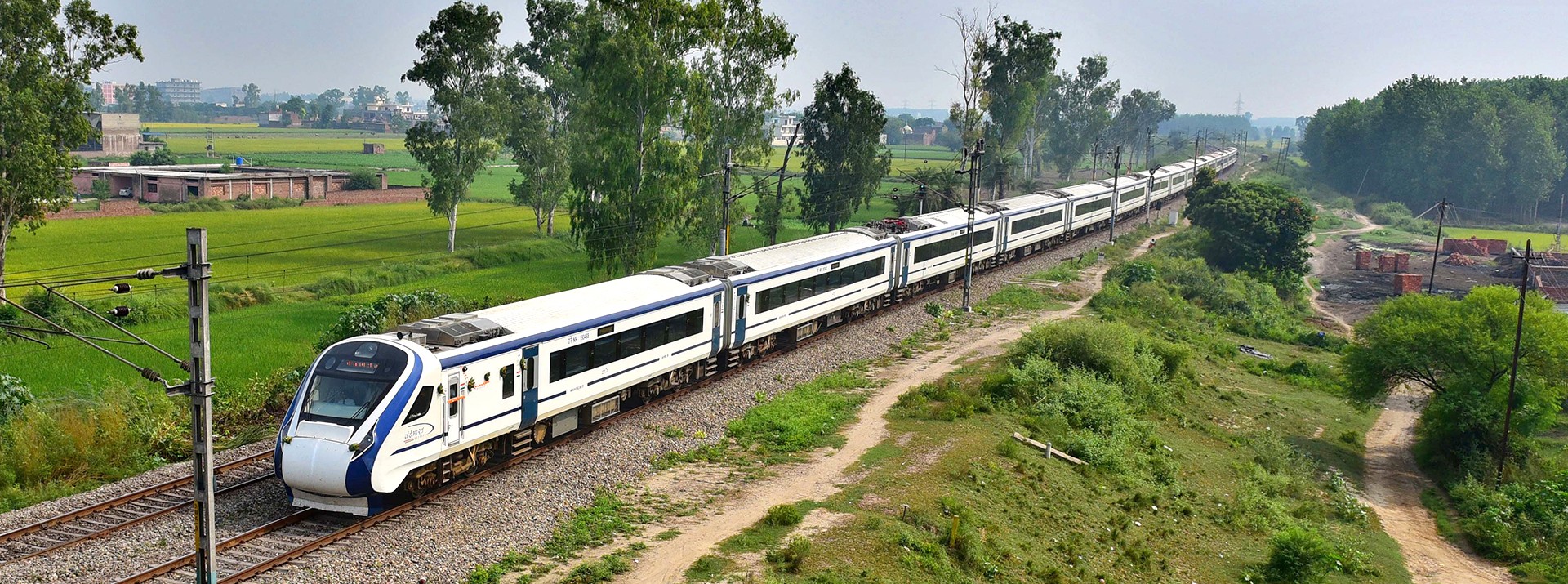
The Vande Bharat Express is bringing modern intercity travel to the subcontinent. Supplying several train systems, Knorr-Bremse is one of the key players in this major project.
On December 30 last year, Indian Prime Minister Narendra Modi connected by video link to the rail station in Howrah, a city of over a million inhabitants in West Bengal. He started by speaking of the forthcoming investments in the nation’s rail network. At the end of his address, he picked up the green flag and waved it to the camera. As he did so, the doors of the train standing at the platform in Howrah closed – in India, the green flag signals that the train is authorized to depart. Moments later, the white-and-blue train pulled away.
There is huge political and public interest in these trains, even though it has now been more than four years since they entered service – including a planned gap of two years following the rollout of the first two trainsets at the end of 2018. The Vande Bharat Express will take seven-and-three-quarter hours to complete the newest of its seven routes, stopping at Barsoi, Malda and Bolpur on its journey of just under 600 kilometers to New Jalpaiguri. “The new Intercity EMUs will complete the journey almost exactly three hours faster than other trains on this route,” says Dipankar Ghosh, Managing Director of Knorr-Bremse India, which is headquartered in Palwal, near New Delhi.
0 to 100 km/h in 54.6 seconds
In the past few years, Ghosh has dealt with matters relating to the Vande Bharat Express on an almost daily basis. Knorr-Bremse supplies the braking and entrance systems for these multiple units, while Microelettrica provides much of the power electronics. In addition, Knorr-Bremse brand Evac is supplying the sanitary systems for the newer trains.
“We obtained the product approvals for the systems, geared up our supply chains, and trained our staff and augmented the local supplier ecosystem in record time,” explains Ghosh. Designed for an operating speed of up to 160 km/h, the Intercity trains are required to have 80 percent domestic content. There are two other noteworthy aspects: The underside of the chassis is designed to allow the trains to run in up to 40 centimeters of water, providing greater flexibility during the rainy season. And if they set off from a station at maximum acceleration, the Electrical Multiple Units (EMUs) can reach a speed of 100 km/h in just 54.6 seconds.
So far, firm orders for 102 16-car trains have been received in several individual call-offs from the state-owned manufacturer Integral Coach Factory (ICF) in Chennai besides another 200 and 100 though Global Tender for the private sector. There are also options for a further 120 trains. “At the moment, one train rolls off the production line every 15 days,” says Managing Director Ghosh.
And it’s likely that they will soon start producing even faster. “Despite their relatively low cost, when it comes to passenger comfort – entertainment, vacuum toilets and soon-to-feature sleeper car configuration – these reliable trains are every bit the equal of the big, estab-lished manufacturers,” says Ghosh. “Some Asian and South American operators are showing a lot of interest in these vehicles.” It looks as if the first Vande Bharat Express export projects are just a matter of time.